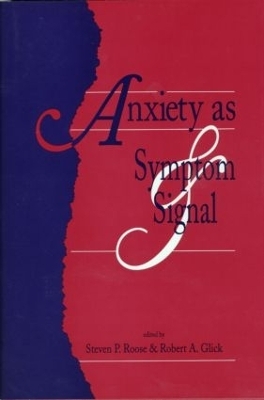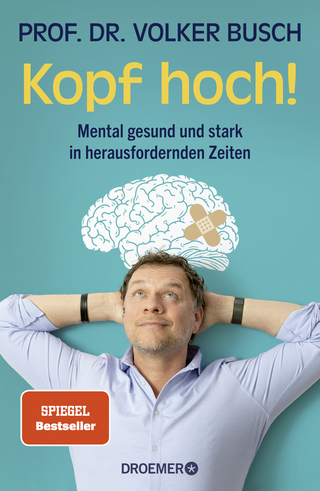
Anxiety as Symptom and Signal
Analytic Press,U.S. (Verlag)
978-0-88163-118-0 (ISBN)
The concept of anxiety has long held a central place in psychoanalytic theories of mind and treatment. Yet, in recent years, data from the neurosciences and from pharmacological studies have posed a compelling challenge to psychoanalytic models of anxiety. One major outcome of these studies is the realization that anxiety both organizes and disorganizes, that it can be both symptom and signal. In Anxiety as Symptom and Signal, editors Steven Roose and Robert Glick have brought together distinguished contributors to address these different dimensions of anxiety. A section of original papers on "Anxiety as Symptom" covers evolutionary, neuroanatomical, genetic, and developmental perspectives. A complementary section on "Anxiety as Signal" focuses on the meanings and functions of anxiety in the clinical process; contributions address anxiety in its ego-psychological, intersubjective, and relational dimensions.
The illuminating, readable collection will broaden clinicians' awareness of the diverse research findings that now inform our understanding of anxiety. No less importantly, it will deepen their appreciation of the richly variegated ways that anxiety can shape, and be shaped by, the clinical process.
Steven P. Roose, M.D., is a faculty member of the Columbia University Center for Psychoanalytic Training and Research, and Associate Professor of Clinical Psychiatry at the Columbia University College of Physicians and Surgeons. Robert A. Glick, M.D., is a Training and Supervising Analyst at the Columbia University Center for Psychoanalytic Training and Research, and Clinical Professor of Psychiatry at the Columbia University College of Physicians and Surgeons.
Glick, Freudian and Post-Freudian Theories of Anxiety. Part I: Anxiety as Symptom: The Mind and the Brain.Hofer, An Evolutionary Perspective on Anxiety. Gorman, Papp, & Coplan, Neuroanatomy and Neurotransmitter Function in Panic Disorder. Fyer, Genetic and Temperamental Variations in Individual Predisposition to Anxiety. Dowling, The Ontogeny and Dynamics of Anxiety in Childhood. Part II: Anxiety as Signal: The Treatment Setting.Fogel, Learning to Be Anxious. Stern, Anxiety and Resistance to Changes in Self-Concept. Renik, The Patient's Anxiety, the Therapist's Anxiety, and the Therapeutic Process. Spezzano, A Relational Perspective on Anxiety. Roose, Does Anxiety Obstruct of Motivate Treatment? When to Talk, When to Prescribe, and When to do Both. Reis, Epilogue.
| Erscheint lt. Verlag | 13.5.1995 |
|---|---|
| Verlagsort | Hillsdale |
| Sprache | englisch |
| Maße | 152 x 229 mm |
| Gewicht | 453 g |
| Themenwelt | Sachbuch/Ratgeber ► Gesundheit / Leben / Psychologie ► Psychologie |
| Geisteswissenschaften ► Psychologie ► Angst / Depression / Zwang | |
| Geisteswissenschaften ► Psychologie ► Persönlichkeitsstörungen | |
| Geisteswissenschaften ► Psychologie ► Psychoanalyse / Tiefenpsychologie | |
| Geisteswissenschaften ► Sprach- / Literaturwissenschaft ► Anglistik / Amerikanistik | |
| Geisteswissenschaften ► Sprach- / Literaturwissenschaft ► Literaturwissenschaft | |
| Medizin / Pharmazie ► Medizinische Fachgebiete ► Psychiatrie / Psychotherapie | |
| ISBN-10 | 0-88163-118-3 / 0881631183 |
| ISBN-13 | 978-0-88163-118-0 / 9780881631180 |
| Zustand | Neuware |
| Haben Sie eine Frage zum Produkt? |
aus dem Bereich


